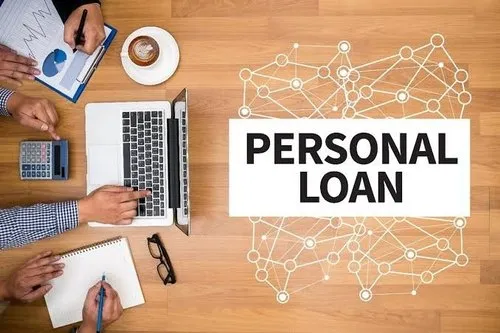In the world of personal finance, loans have become an essential tool to meet various needs—be it funding a wedding, covering a medical emergency, or consolidating existing debts. Among the different types of loans available, personal loans are one of the most popular options due to their flexibility and relatively quick approval process. However, not all personal loans are the same. They can broadly be classified into two categories: secured personal loans and unsecured personal loans.
Understanding the difference between these two types of personal loans is crucial before you apply for one. Each comes with its own set of benefits, risks, eligibility criteria, and repayment structures. Let’s dive deeper into what secured and unsecured personal loans are, and which one might be better suited to your needs.
What is a Personal Loan?
A personal loan is a type of credit that individuals can borrow from banks, NBFCs (Non-Banking Financial Companies), or other financial institutions for personal use. These loans usually come with fixed interest rates and a set repayment tenure, typically ranging from 1 to 7 years. Unlike home loans or car loans, personal loans are not tied to a specific asset.
Now, let’s look at how personal loans are categorized into secured and unsecured types.
Secured Personal Loans
Definition:
A secured personal loan is backed by collateral—an asset that you pledge to the lender as security. This could be your property, fixed deposit, vehicle, gold, or any other valuable asset.
How It Works:
If the borrower fails to repay the loan, the lender has the legal right to seize and sell the pledged asset to recover the outstanding amount.
Common Examples of Secured Loans:
-
Loan Against Property (LAP)
-
Loan Against Fixed Deposit (FD)
-
Loan Against Gold
-
Loan Against Insurance Policies or Mutual Funds
Features:
-
Lower Interest Rates: Since the loan is backed by security, the risk for the lender is lower, resulting in more favorable interest rates.
-
Higher Loan Amounts: Borrowers can access larger amounts, depending on the value of the asset pledged.
-
Longer Repayment Tenure: Lenders are more flexible with repayment terms for secured loans.
-
Credit Score Not a Major Barrier: Even individuals with poor or no credit history might get approval if they can offer sufficient collateral.
Pros:
-
Better interest rates.
-
Higher borrowing limits.
-
Improved chances of loan approval.
Cons:
-
Risk of losing the pledged asset in case of default.
-
Requires documentation related to the collateral.
-
Loan approval may take longer due to asset verification.
Unsecured Personal Loans
Definition:
An unsecured personal loan does not require any collateral. The loan is granted purely based on the applicant’s creditworthiness, income, and repayment capacity.
How It Works:
Since there is no asset to back the loan, the lender bears a higher risk. This is why unsecured loans come with stricter eligibility criteria and relatively higher interest rates.
Common Examples of Unsecured Loans:
-
Standard Personal Loans
-
Wedding Loans
-
Medical Loans
-
Education Loans (in some cases)
Features:
-
Quick Approval and Disbursal: Unsecured loans often have a faster processing time.
-
No Risk to Assets: Borrowers don’t have to worry about losing personal property.
-
Shorter Tenures: Typically ranges from 12 months to 60 months.
Pros:
-
No need to provide collateral.
-
Simple and quick loan process.
-
Ideal for short-term needs.
Cons:
-
Higher interest rates.
-
Strict eligibility requirements.
-
Lower loan amounts compared to secured loans.
Key Differences Between Secured and Unsecured Personal Loans
| Criteria | Secured Personal Loan | Unsecured Personal Loan |
|---|---|---|
| Collateral Required | Yes | No |
| Interest Rate | Lower | Higher |
| Loan Amount | High (depends on asset value) | Moderate (depends on credit score and income) |
| Approval Time | Longer (due to asset verification) | Faster |
| Risk to Borrower | Risk of losing asset | No asset risk |
| Eligibility Criteria | Flexible | Stringent |
| Loan Tenure | Longer | Shorter |
Which One Should You Choose?
The choice between a secured and unsecured personal loan depends on your financial situation, purpose of the loan, and risk appetite.
Choose a Secured Personal Loan if:
-
You have valuable assets and are comfortable pledging them.
-
You want a larger loan amount at lower interest rates.
-
You have a poor credit score or unstable income.
-
You are okay with a slightly longer processing time.
Choose an Unsecured Personal Loan if:
-
You need quick funds for emergencies.
-
You have a good credit score and regular income.
-
You do not want to risk your personal assets.
-
Your loan requirement is relatively smaller.
Impact on Credit Score
Both types of loans affect your credit score. Timely repayments can significantly improve your credit profile, while missed payments can harm it. However, defaulting on a secured loan can have a dual impact—credit score damage and loss of the pledged asset.
Conclusion
Understanding the difference between secured and unsecured personal loans helps you make an informed borrowing decision. If you’re looking for a larger loan amount at better terms and have collateral to offer, a secured loan is a good option. On the other hand, if you need quick access to funds without risking any asset, an unsecured loan could be the right choice.
Before applying for any type of personal loan, always evaluate your repayment capacity, compare offers from multiple lenders, and read the terms and conditions carefully. A smart borrowing decision can save you money and keep your finances healthy in the long run.
